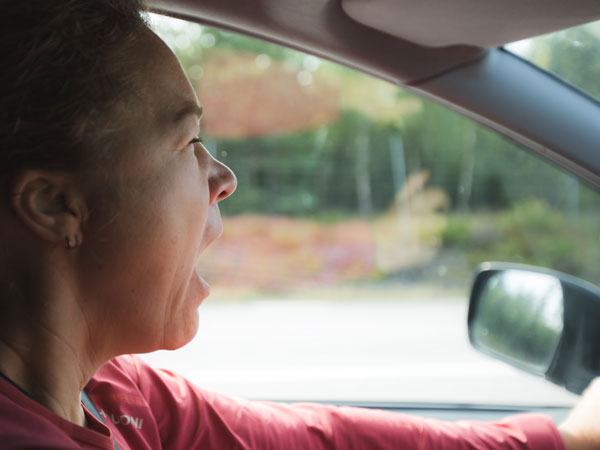Driver fatigue has been a research area at VTI for several years, and the researchers have studied various aspects such as the working hours of professional drivers, driver behaviour, accident risks, and the design of warning systems. They are now moving forward, attempting to find a way to objectively measure driver fatigue using physiological measurements.
“The aim is to gain a better understanding of what happens in the brain when you are sleepy,” says Christer Ahlström, senior researcher at VTI. “If we manage to develop a reliable sleepiness baseline, it can be used as a yardstick when evaluating the effectiveness of various countermeasures; everything from rumble strips in the road and opening the window to the warning systems that are now being introduced in our cars.”
The EU has decided that as of 2022, all new cars must be equipped with advanced safety systems, including systems that address attention loss and fatigue.

Driver fatigue has been a research area at VTI for several years. Photo: Katja Kircher, VTI.
Signals that are difficult to interpret
However, it is difficult to measure sleepiness; it is much harder than measuring sleep. Sleep can be measured fairly easily by looking at the electrical activity of the brain using EEG. When we fall asleep, the electrical activity goes from low-amplitude and irregular signals to strong and regular waves. In order to measure tiredness, the transition from awake to sleep, it is not enough to simply interpret the regular brainwaves, but you also need to understand the irregular signals, and this is what the researchers are now attempting to do.
“As traffic researchers, we are of course interested in measuring brain activity before you fall asleep, because once a driver is asleep, it is too late. An EEG of a person who is awake consists of a mixture of different processes taking place simultaneously in the brain, and it is difficult to discern which part of the EEG is the result of a specific process,” says Christer Ahlström.
However, if the researchers repeat a certain event several times, for example by measuring the brain’s response to a blinking light, they can produce an average curve showing the brain’s reaction to the blinking light specifically. This measurement is called an Event Related Potential (ERP), and depending on what the average curve looks like, you can see how well the brain is processing information.
Using driver eye movements
But if you want to measure the tiredness of a driver, it is not a good idea to use blinking lights as these may disturb the driver. By having 30 test subjects drive a given distance a total of six times, the researchers have instead concluded that regular eye movements can act as a stimulus in ERP measurements. The idea is that each time the driver moves their eyes, the brain is forced to process what the eyes are seeing. Using ERP technology, you can then objectively measure how well the brain is processing this new visual information. When comparing alert and sleepy drivers, the researchers noted that the sleepy brain reacts more slowly and does not process what you see as effectively. The tests have been conducted in VTI’s advanced driving simulators, and the next step will be to see if the method also works in real traffic.
“It has not been included in this project, but we are hoping to get funding to continue this research in the future and have test subjects driving in real traffic,” says Christer Ahlström in closing.
The project has been conducted in collaboration with Volvo Cars and Mälardalen University, with funding from Vinnova’s Strategic Vehicle Research and Innovation programme (FFI).
 Contact:
Contact:
Christer Ahlström
christer.ahlstrom@vti.se
VTI, Sweden






Follow us: